Multiple Notable Companies Join The Immersive Technology Alliance
Noticia:The Immersive Technology Alliance, the same group that brought us the Immersed conferences in Toronto, Canada and Murcia, Spain, has had a number of high profile members join in recent weeks. In early December, AMD joined the alliance and Daryl Sartain, Director of VR for AMD, was appointed as the Chairman of the VR Council, jointly created by AMD and the ITA.
So far, January has been a big month for the ITA. Futuremark joined the alliance on January 4, as did Skybound Entertainment, the entity behind The Walking Dead series. Starbreeze Studios joined the alliance on January 8; Starbreeze is the publisher of games such as Payday 2 and the upcoming game, The Walking Dead, being created by Overkill. Starbreeze is also the company developing the StarVR headset, which Tom's Hardware tried at Immersed 2015 in September.
Crytek is the latest high-profile company to join the Immersive Technology Alliance. Crytek is well known for creating some of the most graphically demanding and impressive visuals found in any game. Crytek made the first Far Cry game before selling the rights to Ubisoft. The company then went on to create the Cryengine and the Crysis games. Recently, Crytek has focused much of its attention on VR development. The Cryengine has seen a number of updates to make the engine a good fit for virtual reality titles. Crytek also has two VR titles of its own coming out this year, The Climb, for Oculus Rift and Robinson: The Journey, which is a launch title for PSVR.
ITA's Executive Director, Neil Schneider, said "The alliance has worked with Crytek in one form or another over the course of years, and it's an honor that they have officially joined up."
http://www.tomshardware.com/news/high-profile-members-join-ita,31010.html
IM360 Wants You To Catch A Live Boxing Match In VR This WeekendNoticia:On January 16, at 9pm GMT (1pm PT), Immersive Media (IM360) will broadcast its first live boxing match in 360-degree immersive video. Former heavyweight champion, David "Hayemaker" Haye, will square off against Mark "The Dominator" de Mori at the O2 Arena in London, England, and you'll be able to experience the fight as if you were there in the crowd.
"I'm fascinated by new emerging technologies, and am constantly looking to embrace the digital world in order to connect with my fans. With this in mind, I'm thrilled to bring immersive VR technology to big time boxing -- allowing the public to stand alongside me in the ring, letting them see what I see and experience every punch," said Boxer David Haye.IM360, in partnership with Salter Brothers Entertainment, created the Hayemaker 360 VR application to allow people to watch the live broadcast. In addition to catching the live fight, IM360 said the Hayemaker 360 application will host exclusive content about David Haye, including an inside peak at his everyday life.
"Virtual reality technologies and immersive experiences are at the heart of this next wave of digital evolution. As a company, we are dedicated to creating new ways of making live sports and entertainment more exciting and engaging," said Andrew Salter, Co-CEO of Salter Brothers Entertainment. "To be the very first to bring live VR and 360 to boxing, together with our client David Haye and IM360 this Saturday at O2 Arena, is truly an exciting moment in sports technology," Simon Salter, Co-CEO of Salter Brothers Entertainment added.The Hayemaker 360 application is designed for Android smartphones and tablets running Android OS version 4.4 or newer. The app can be found in the Google Play store and is available as a free download.
http://www.tomshardware.com/news/hay...ing,31012.html
User Tag List
 Likes: 0
Likes: 0
Resultados 31 a 45 de 120
-
15-01-16, 15:03 #31Tech Ubër-Dominus


- Registo
- Nov 2013
- Local
- City 17
- Posts
- 30,121
- Likes (Dados)
- 0
- Likes (Recebidos)
- 2
- Avaliação
- 1 (100%)
- Mentioned
- 0 Post(s)
- Tagged
- 0 Thread(s)
-
15-01-16, 17:31 #32Master Business & GPU Man


- Registo
- Jan 2015
- Local
- País Campeão Euro 2016
- Posts
- 7,793
- Likes (Dados)
- 0
- Likes (Recebidos)
- 1
- Avaliação
- 41 (100%)
- Mentioned
- 0 Post(s)
- Tagged
- 0 Thread(s)
Vão ter de por os recomended specs como minimun para minimizarem a probabilidade de haver muita gente com má experiência de jogo. O problema é que pelo que já se viu, esses recomended, ainda nem existem
 Ideias sem Nexo e Provas do Tráfico de Hardware
Ideias sem Nexo e Provas do Tráfico de Hardware
"que personifica o destino, equilíbrio e vingança divina." Dejá vú. Que cena!
-
18-01-16, 14:19 #33Tech Ubër-Dominus


- Registo
- Nov 2013
- Local
- City 17
- Posts
- 30,121
- Likes (Dados)
- 0
- Likes (Recebidos)
- 2
- Avaliação
- 1 (100%)
- Mentioned
- 0 Post(s)
- Tagged
- 0 Thread(s)
VR-powered Holodecks will come 15 years from now, says Oculus
Noticia:All too often today's technology meets--and sometimes surpasses--the futuristic tech we see in shows like Star Trek. The advent of VR and AR tech opens a doorway to one of the most exciting sci-fi dreams ever manifested: the Holodeck. But according to Oculus VR, the tech won't be ready for some time, but we may see a VR-powered Holodeck emerge in less than two decades time.
"Everyone wants the Holodeck, but we're not there tomorrow. We're not there in the next five years. In about 15 we'll be there," Oculus' head of mobile exec Max Cohen said to Pocket-Lint. "We'll get there incrementally. We'll basically attack different sets of problems and we'll try to make the experience as good as possible."
Remember that Star Trek's Holodeck uses "hard-light" holograms to simulate realistic environments which can be touched and felt. VR, on the other hand, is all about high-tech legedermain and trickery: the virtual space becomes a "real" space with the aid of synthetic tech, and the advent of haptic feedback bodysuits and gloves can already bring the sense of touch to virtual reality.
According to Cohen, VR-powered Holodecks will require wireless virtual reality head-mounted displays. Right now, all emerging high-powered VR headsets--Oculus Rift, HTC Vive , and PlayStation VR--are tethered via multiple cords, and require higher-end hardware to belt out the substantial low-latency, high-resolution graphics and visuals needed to simulate VR.
"Unfortunately, it's currently not possible to get the Rift experience with a wireless head-mounted display. And we're having spectrum problems all the time - I can't even use Netflix and my baby monitor at the same time," Cohen iterated.
Interestingly enough, Japanese researchers have already paved the way to Holodecks by creating "touchable" holograms. This is a far cry from substainable hard-light holograms, and the tech is pretty much in the same vein as VR haptic feedback tech. The Japanese Haptoclone hologram tech uses telehaptics, which involves a motion sensor capturing a motion while ultrasound arrays emit ultrasonic radiation pressure to simulate touch.
While the tech isn't there just yet, it's still exciting to see the doorways open up for all kinds of possibilities in the future. Maybe one day we'll have real, working Holodecks for leisure activities, and maybe even a Danger Room training facility right out of X-Men.
http://www.tweaktown.com/news/49716/...lus/index.html
Ainda vai demorar eternidades...
-
18-01-16, 14:26 #34Master Business & GPU Man


- Registo
- Jan 2015
- Local
- País Campeão Euro 2016
- Posts
- 7,793
- Likes (Dados)
- 0
- Likes (Recebidos)
- 1
- Avaliação
- 41 (100%)
- Mentioned
- 0 Post(s)
- Tagged
- 0 Thread(s)
Passa rápido!
Ideias sem Nexo e Provas do Tráfico de Hardware
"que personifica o destino, equilíbrio e vingança divina." Dejá vú. Que cena!
-
20-01-16, 09:21 #35Tech Ubër-Dominus


- Registo
- Nov 2013
- Local
- City 17
- Posts
- 30,121
- Likes (Dados)
- 0
- Likes (Recebidos)
- 2
- Avaliação
- 1 (100%)
- Mentioned
- 0 Post(s)
- Tagged
- 0 Thread(s)
Crytek Announces 'VR First' Academic Program
Noticia: Crytek is one of the only AAA studios shifting its focus on the future of virtual reality. The company is currently developing two VR launch titles: Robinson: The Journey for PSVR, and The Climb for Oculus Rift. Crytek has also put tremendous effort into implementing tools for VR development into its famous Cryengine suite, allowing other studios the ability to create graphically intensive VR experiences. And last week, the studio joined the Immersive Technology Alliance.
Crytek is one of the only AAA studios shifting its focus on the future of virtual reality. The company is currently developing two VR launch titles: Robinson: The Journey for PSVR, and The Climb for Oculus Rift. Crytek has also put tremendous effort into implementing tools for VR development into its famous Cryengine suite, allowing other studios the ability to create graphically intensive VR experiences. And last week, the studio joined the Immersive Technology Alliance.
Today, Crytek announced VR First, a program designed to provide universities with resources needed for students to learn about the burgeoning VR industry. Through the VR First program, Crytek will provide selected academic institutions with free access to Cryengine source code. In addition, Crytek has partnered with unnamed hardware affiliates who will provide VR HMDs and computers to operate them with.
 Crytek said that Istanbul’s Bahçeşehir University is the first beneficiary of the VR First program. The lab opened today and will be running as a pilot test, but Crytek said there will be more facilities coming. The company wishes to create "a global community equipped to embrace this exciting field of technology" and plans to open VR First facilities around the world.
Crytek said that Istanbul’s Bahçeşehir University is the first beneficiary of the VR First program. The lab opened today and will be running as a pilot test, but Crytek said there will be more facilities coming. The company wishes to create "a global community equipped to embrace this exciting field of technology" and plans to open VR First facilities around the world.
VR FirstCrytek is looking for interested affiliate partners and people interested in establishing VR First labs in various regions. For more information about Crytek’s VR First program, you can visit the VR First website. Crytek has a contact form for anyone interested in becoming a partner.
http://www.tomshardware.com/news/cry...ram,31031.html
-
22-01-16, 14:12 #36Tech Ubër-Dominus


- Registo
- Nov 2013
- Local
- City 17
- Posts
- 30,121
- Likes (Dados)
- 0
- Likes (Recebidos)
- 2
- Avaliação
- 1 (100%)
- Mentioned
- 0 Post(s)
- Tagged
- 0 Thread(s)
Apple hires Virginia Tech professor, an expert in AR and VR technology
Noticia:We're only weeks away from the launch of the Oculus Rift, with the month after seeing HTC launch its Vive headset. But now, Apple looks to finally be moving with its VR and AR plans, hiring Virginia Tech computer science professor Doug Bowman.
Bowman was listed as one of the grant winners of the HoloLens research projects, with his skills including creating 3D user interfaces for VR/AR experiences. Bowman has said that one of the ideas he's been working on for a while now is wearable displays, and full surround display prototypes. We should see Apple get into the AR game with its Titan car project, where 3D and gesture-controlled interfaces within the car would make perfect sense.
http://www.tweaktown.com/news/49849/...ogy/index.html
O que será que vem da Apple?
-
22-01-16, 14:51 #37Tech Ubër-Dominus


- Registo
- Nov 2013
- Local
- City 17
- Posts
- 30,121
- Likes (Dados)
- 0
- Likes (Recebidos)
- 2
- Avaliação
- 1 (100%)
- Mentioned
- 0 Post(s)
- Tagged
- 0 Thread(s)
Ubisoft partners with Elijah Wood studio for VR content
Noticia:Ubisoft has big plans for virtual reality, with a number of games in the works that will be compatible with both the Oculus Rift and HTC Vive headsets. However it isn’t stopping there, as it’s just announced a partnership with Elijah Wood’s production company, SpectreVision, most known for horror films like A Girl Walks Home at Night, to create original virtual reality content together.
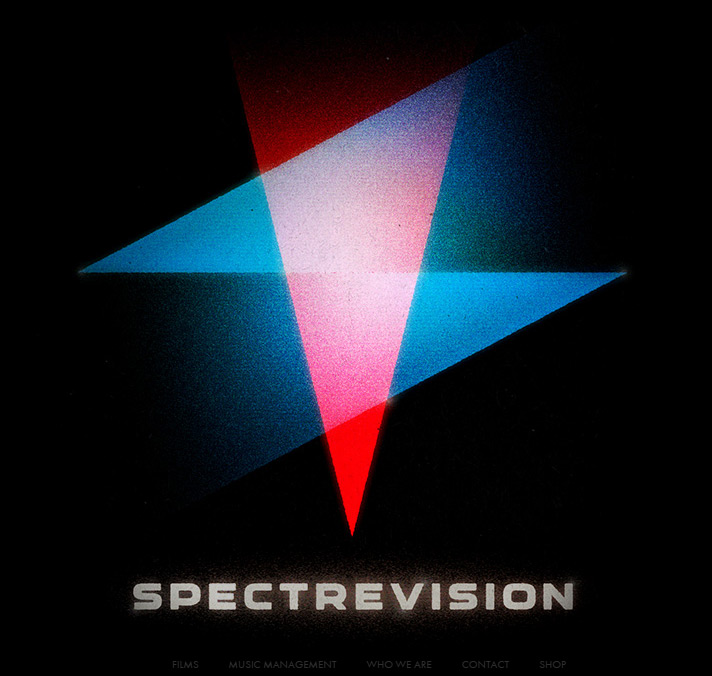
“Their expertise in the horror film genre is exciting for us,” Patrick Plourde, Vice President of Ubisoft Montreal said in a blog post. “We’re looking forward to a collaboration that will ultimately offer fans an unforgettable virtual reality experience.”
The two firms’ cooperation will go much further than the recently released Ubisoft 360 video showcase of Jack the Ripper from Assassin’s Creed Syndicate. Presumably it will be some form of 360 video content, most likely within the horror genre, but until we learn more it’s all rather speculative.
It seems likely that Ubisoft will make some sort of announcement around late March when the Oculus Rift CV1 headsets will start shipping out to pre-orderers, though it may ramp things up a little earlier if HTC can stick to its slated early March shipping. The rumour doing the rounds at the moment though is that it won’t.
Even with HTC’s big manufacturing facilities and pedigree, going from what is said to be a second developmental kit in the HTC Vive Pre, to a consumer model in less than three months seems like a stretch.
http://www.kitguru.net/components/vr/jon-martindale/ubisoft-partners-with-elijah-wood-studio-for-vr-content/
VicoVR Sensor Brings Full Body Motion Tracking To Mobile VR HMDs (Video)Noticia:
CES 2016 was rife with VR-related tech -- some exceptional, some not so much -- but one company we encountered is making a full-body motion tracking camera that’s designed to work with low-cost, mobile HMDs like Samsung’s Gear VR and Google Cardboard devices.
I spoke with Dmitry Morozov, VicoVR’s Business Development Director, about the VicoVR Sensor, and he answered my questions and gave me a chance to try it out.
Under The Hood
My first thought was that the VicoVR looked like a Kinect, and it does, but this device has VicoVR’s own secret sauce inside. Morozov told me that although VicoVR is fundamentally a software company, it’s begun pushing into hardware. A year ago, they began experimenting with a prototype using off-the-shelf parts, and they’ve since customized from there.
The VicoVR team made their own board, and they used a Samsung Exynos chip to power it. It’s a self-contained unit; all the sensing and processing is done on board and is then sent to a device (your mobile HMD) via Bluetooth. The module uses a USB port for power.
They’ve employed ORBBEC’s Astra 3D module for depth sensing over other options, such as Intel’s RealSense, because they wanted to remain hardware agnostic. Morozov also told me that RealSense can’t do full-body motion sensing, and besides, it has too many OS restrictions. Primesense was a no-go because Apple snapped it up a couple of years ago.
The module has an optimal range of 1-5 meters. I immediately stepped back as far as I could, and the module picked me up beyond 5 meters, but Morozov said that the experience wouldn’t be as strong from that distance.
VicoVR Sensor Demo CES 2016How It Works
The VicoVR Sensor “looks” at multiple skeletal points to create its image of a person. The camera can “see” in VGA at 30 fps (that’s how it tracks, not how it displays). As the sensor tracks your movements, it places those action inside of an interactive game that you’re playing inside a mobile VR HMD.
It can actually see two people with one sensor, so you can enjoy some experiences with a partner, provided you’re both wearing HMDs.
As it’s hardware agnostic, VicoVR wants its sensor to essentially be platform agnostic, as well. That’s easier said than done. The company does have an Android SDK -- Morozov told me that dev kits were already in the mail -- but developing an Apple SDK is a longer cycle. (He didn’t mention anything about Windows Phone.)
Punching Through The Demo
The demo that Morozov and his assistant showed me was simple but effective.
I played the same boxing demo seen in the video embedded in this article, and as you can see, there’s a small amount of lag. Morozov said that the only real lag is from the Bluetooth connection, which he noted is down to 10 ms.
Once in the demo, I was faced with a head-and-torso dummy. When areas of the dummy lit up, I had to punch them. This took some getting used to; the sensor seemed to pick up my arm movements reasonably well, but the 3D effect didn’t quite match what I was seeing. I thought I was hitting the target, but I actually had to step forward and around and then punch to connect to the right spot.
After I satisfied the game’s accuracy test, I had a certain amount of time -- a couple of minutes, as I recall -- to sufficiently batter the dummy, which I gleefully did.
Like other motion peripherals, the VicoVR couldn’t track and translate my actions nearly as fast as I could move in real life, and there’s a lack of tactile satisfaction when you punch something in-game but physically connect only with air. It reminded me quite a bit of Wii boxing, actually, except of course the VicoVR was tracking my whole body and placing those movements into a 3D environment, whereas the Wii just tracks the nunchakus in your hands.
I would not describe the experience as immersion, by any stretch, but it was fun. I can imagine a game where I would have to fight off a gang of meanies coming at me from all sides, requiring me to whip around 360 degrees and defend myself. More to the point, I can imagine my kids discovering all sorts of games and experiences with this gear.

Looking Forward
As I mentioned above, VicoVR supports Google Cardboard and Gear VR, and Morozov said that they’re hoping to add Nvidia’s Shield, Android TV, Apple TV and more. Acquiring that level of ubiquity, and on those types of devices, is a wise goal. After playing the demo, the VicoVR Sensor seems ideal for more casual games -- not unlike the sort of games you play with your kids on the Wii or the Kinect. The difference here is that you’d be in a VR environment.
Because Google Cardboard is so inexpensive (for that matter, Gear VR isn’t all that pricey at just $99), and because ideally there would be multiple smartphones in the house two players could use simultaneously, VicoVR is pushing into the world of fun, family-friendly living room entertainment.
It’s not going to be cheap -- Morozov said that the retail version of the module will likely cost in the area of $270 (although via an upcoming crowdfunding campaign, you’ll be able to reserve one for $200), but again, this is a device that does it own heavy lifting. You don’t need an expensive console nor a PC; it processes and feeds the sensor data to your smartphone and HMD.
Many of the VR experiences we’ve seen rock your world, but as the market grows, many VR experiences will simply be enchanting and enjoyable -- and inexpensive. VicoVR appears to be making a product that sits in the latter camp.
Update, 1/21/16, 5:35am PT: Fixed typo.
http://www.tomshardware.com/news/vic...ing,31045.html
Última edição de Jorge-Vieira : 22-01-16 às 14:57
-
22-01-16, 18:21 #38Tech Ubër-Dominus


- Registo
- Nov 2013
- Local
- City 17
- Posts
- 30,121
- Likes (Dados)
- 0
- Likes (Recebidos)
- 2
- Avaliação
- 1 (100%)
- Mentioned
- 0 Post(s)
- Tagged
- 0 Thread(s)
Facebook encoding 360-degree videos using pyramid geometry for VR
Noticia:With Facebook owning Oculus, it should come as no surprise that the social networking giant is optimizing 360-degree video for VR experiences. Facebook engineers are now encoding videos using pyramid geometry, which reduces their file size by a huge 80%.
The pyramid geometry technique takes flat frames, turns them into spheres, and places them inside of a pyramid. From there, it uses the highest resolution image at the base of the pyramid, with the sides "gradually decrease in quality as you go up", reports Engadget. Each pyramid has 30 different views, with Facebook creating five streaming in various resolutions for each one. Facebook then saves all 150 versions of your video on its servers, streaming the one you're looking at - depending on the speed of your Internet connection.
Before using the pyramid geometry technique, Facebook used cube mapping which reduced file sizes by 25% - but a saving of 80% is a huge deal. The company has also replaced its video processing system with Streaming Video Engine (SVE), which splits files into multiple parts in order to upload and encode them separately, all at once. This method both speeds up the encoding process, and playback, by 10x.
http://www.tweaktown.com/news/49852/...-vr/index.html
-
23-01-16, 14:02 #39Tech Ubër-Dominus


- Registo
- Nov 2013
- Local
- City 17
- Posts
- 30,121
- Likes (Dados)
- 0
- Likes (Recebidos)
- 2
- Avaliação
- 1 (100%)
- Mentioned
- 0 Post(s)
- Tagged
- 0 Thread(s)
EA’s Frostbite Labs Exploring Opportunities In VR & AR
A recent vacancy at EA’s Stockholm-based Frostbite Labs confirms that EA is now actively looking into VR and AR.

A small multi-disciplined team within EA Studios, Frostbite Labs is looking for new ways and experiences to reach players. One of the team’s first initiatives is to explore opportunities in virtual and augmented reality.
Frostbite Labs – a group that will help us push the boundaries of technology and shape the future of gaming.EA’s VR Frostbite team; Frostbite Labs
Frostbite Labs will begin as a small, multi-disciplined team within EA Studios. Based initially in Stockholm but reaching around the globe, the remit of Frostbite Labs is to explore the undefined or nascent opportunities for new experiences and ways to reach our players. These will be high-potential and possibly high-risk opportunities. Every project will have an intended destination within EA Studios or across Electronic Arts, and key measures to understand the return on each opportunity.
The Frostbite Labs team will have a narrow and deep focus on a few selected projects at a time, working with partners both internally at EA and externally. Amongst the first initiatives of Frostbite Labs will be to explore opportunities in virtual and augmented reality. The team will also research initiatives from potential partners looking at entering the HD market.
Frostbite Labs’ projects will join all the great work happening across Frostbite, our game studios, EADP, EA Mobile and other teams. And there will be other Labs initiatives starting in different parts of EA as well, amplifying our collective pursuit of innovation in new and exciting ways.
Advertisements
The small team is looking for a Senior Software Engineer, and a Senior Game designer for virtual reality projects. Last month, DICE’s technical director Johan Andersson already tweeted that the studios is building a “small VR frostbite team”.
Interestingly enough, EA’s Black Jorgensen recently pointed out that they would show caution when it comes to virtual reality.
There’s some challenges still and I think the biggest challenge is just the size of the market. We don’t make games anymore for the Wii or the Wii U because the market is not big enough, the PS Vita – the Sony product – we don’t make games for that anymore because the market is too small, so it’s all about the size of the market.Are you excited that EA is exploring the ways of VR and AR? What EA VR titles would you like to play? Leave a comment.
I think the reality is, the next one to three years, it’s probably going to take some time to build up a sizable marketplace and you might see alternative uses for virtual reality first before it becomes gaming
Longer term, five plus years away, I think there’s certainly a market there and it will be another exciting way to enjoy gaming.
-
23-01-16, 14:05 #40O Administrador


- Registo
- Mar 2013
- Local
- Multiverso
- Posts
- 17,814
- Likes (Dados)
- 74
- Likes (Recebidos)
- 156
- Avaliação
- 31 (100%)
- Mentioned
- 31 Post(s)
- Tagged
- 0 Thread(s)
Boas!
Sem dúvida que quando correctamente programado, o Frostbyte 3 está ao nível do Unreal Engine 4.x.
Diria até que pode estar um pouco até acima...
O Fotorealismo que eu vi no Battlefront, é um exemplo de uma correcta programação de um jogo, usando fotometria para texturas realistas.
Portanto se o caminho é criar algo realista e que consiga mesmo "enganar" a cabeça (VR e AR), terá que ser por ai...
Cumprimentos,
LPCMy Specs: .....

CPU: AMD Ryzen 7 5800X3D :-: Board: MSI B550M BAZOOKA :-: RAM: 64 GB DDR4 Kingston Fury Renegade 3600 Mhz CL16 :-: Storage: Kingston NV2 NVMe 2 TB + Kingston NV2 NVMe 1 TB
CPU Cooling Solution: ThermalRight Frost Commander 140 Black + ThermalRight TL-C12B-S 12CM PWM + ThermalRight TL-C14C-S 14CM PWM :-: PSU: Corsair HX 1200 WATTS
Case: NZXT H6 FLOW :-: Internal Cooling: 4x ThermalRight TL-C12B-S 12CM PWM + 4x ThermalRight TL-C14C-S 14CM PWM
GPU: ASUS TUF AMD RADEON RX 7900 XTX - 24 GB :-: Monitor: BenQ EW3270U 4K HDR
-
25-01-16, 14:32 #41Tech Ubër-Dominus


- Registo
- Nov 2013
- Local
- City 17
- Posts
- 30,121
- Likes (Dados)
- 0
- Likes (Recebidos)
- 2
- Avaliação
- 1 (100%)
- Mentioned
- 0 Post(s)
- Tagged
- 0 Thread(s)
Starbreeze to open StarVR arcade hall
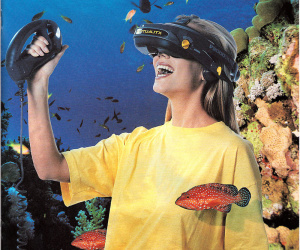 Remember Virtuality from the 90s? Starbreeze does, and plans to pack an arcade hall with its StarVR hardware in an echo of VR's glory days.
Remember Virtuality from the 90s? Starbreeze does, and plans to pack an arcade hall with its StarVR hardware in an echo of VR's glory days.
Noticia:Starbreeze has announced it is bringing back the 90s in a most glorious fashion: with the launch of a physical arcade hall dedicated to virtual reality.
There's no denying that virtual reality is a hot topic at present, but the technology remains inaccessible to the majority: aside from relatively primitive devices designed to use an existing smartphone as a display, such as Google Cardboard, commercial virtual reality rigs are expensive, even before you factor in the cost of a computer capable of driving them - or at least, they are going to be expensive, when the much-delayed hardware finally launches.
It's much the same problem that head-mounted display sets had in the early 1990s, but on a different scale: the most popular VR rigs in the 90s were from the Virtuality family, which was priced so high it was entirely unaffordable for private use and was instead sold into arcade halls where players could queue to pay £2 for up to five minutes of nausea-inducing multiplayer first-person combat. Compared to Virtuality, an Oculus Rift or similar is a bargain - but Starbreeze reckons that 90s arcade operators were onto something.
'We continue to iterate the fact that VR really needs to be experienced in person to fully be able to appreciate the phenomenon, and why not have your first experience in a real premium setting in our StarVR headset? We've managed to secure a prime location where people are welcome to step into our StarCade and enjoy our Overkill's The Walking Dead VR experience,' explained Starbreeze chief technical officer Emmanuel Marquez of his company's plans to open a Virtuality-style arcade hall in Los Angeles. 'We're developing our own StarCade catalogue of experiences, but we're open to any content. We will invite developers to join us and give them the opportunity to put their content in our StarCade. We as an industry continuously need to educate ourselves to make VR truly successful, and this is just the first step in our planning to do so.'
Starbreeze has not yet indicated how much it plans to charge for time on its headsets, nor how many of its own-brand StarVR devices the hall will host.
http://www.bit-tech.net/news/gaming/...tarvr-arcade/1
-
26-01-16, 09:40 #42Tech Ubër-Dominus


- Registo
- Nov 2013
- Local
- City 17
- Posts
- 30,121
- Likes (Dados)
- 0
- Likes (Recebidos)
- 2
- Avaliação
- 1 (100%)
- Mentioned
- 0 Post(s)
- Tagged
- 0 Thread(s)
Apollo 11 VR Experience To Be Launch Title For Rift, HTC Vive, And PSVR, Gear VR May Come Later
Noticia: Immersive Education, the company behind the Kickstarter-funded Apollo 11 VR experience, posted a huge update on the campaign page today. Among the many things the team discussed was the confirmation that the experience will launch on HTC Vive, Oculus Rift, and Playstation VR. The company said it is “working very hard to ensure that we hit the submission deadlines and quality checks for each platform.”
Immersive Education, the company behind the Kickstarter-funded Apollo 11 VR experience, posted a huge update on the campaign page today. Among the many things the team discussed was the confirmation that the experience will launch on HTC Vive, Oculus Rift, and Playstation VR. The company said it is “working very hard to ensure that we hit the submission deadlines and quality checks for each platform.”
Immersive Education said it is frequently asked about support for Gear VR, and it is focusing all of its resources on the three premium platforms, to create “best possible experience we can without hitting hardware limitations”. Immersive Education has not yet looked at porting to the Gear VR platform, but that will be considered after Apollo 11 VR is released. There will also be a 360-degree video of the mission released for free in the near future. The company said a version will be prepared for Rift DK2 owners, as well.
 The company will be offering the educational experience at no charge to schools and colleges around the world. The team building Apollo 11 VR hopes that experiencing it will set “them on the path to becoming astronauts, engineers and scientists.” Immersive Education said the academic experience will differ somewhat from the retail version that will be available for home. The differences will be detailed after the retail version is released.
The company will be offering the educational experience at no charge to schools and colleges around the world. The team building Apollo 11 VR hopes that experiencing it will set “them on the path to becoming astronauts, engineers and scientists.” Immersive Education said the academic experience will differ somewhat from the retail version that will be available for home. The differences will be detailed after the retail version is released.
Immersive Education said the Apollo 11 experience is nearly complete, with developers focusing on refinements, rather than the core experience. The company said it made the switch from gamma corrected lighting, which is meant for viewing on a monitor, to linear lighting, which Immersive Education said “gives a cleaner view of the darkest parts of an environment, [and] it also improves the clarity of the scene when lens distortion happens.”
 The update on the Kickstarter page also revealed that Immersive Education has been using the Perception Neuron motion capture system (the same one that Cloudhead games used for it’s in-game mocap solution.) Nick Pittom, the project’s animator, provided a video demonstration of what the process looks like, and how the animation turned out on the modeled spacesuits.
The update on the Kickstarter page also revealed that Immersive Education has been using the Perception Neuron motion capture system (the same one that Cloudhead games used for it’s in-game mocap solution.) Nick Pittom, the project’s animator, provided a video demonstration of what the process looks like, and how the animation turned out on the modeled spacesuits.
Apollo 11 VR MoCapThe update also talked about the system used to model the astronauts. The Apollo 11 VR team employed Infinite Realities to create a 50 camera Photogrammetry rig that is “synced to a spherical global illumination system called the GI-LITE.” Using this setup, Infinite Realities can “capture cross and non-polarized albedo skin texture data to build the RAW scan, which we augment with photometric normals to emboss on the scan data to provide accurate bump information.”
If that doesn’t make sense to you, just take a look at the images, and you’ll see the net results. Infinite Realities said the scanning process requires less than a full second to complete.
Immersive Education said that Kickstarter backers will be able to choose which platform they would like their copy of the game for. The company said an email will go out to backers about the selection closer to the launch of the Oculus Rift. In the meantime, DK2 owners can try out a demo of Apollo 11 VR, available from the Immersive Education website.
http://www.tomshardware.com/news/apollo11-multi-platform-vr-launch-title,31066.html
IM360, Sundance Institute Launch Sundance VR Mobile AppNoticia:
IM360 announced that, in a partnership with the Sundance Institute, it has created the official Sundance VR application, which will feature the immersive cinema and VR experiences that will be shown at the Sundance Film Festival.
Sundance VR is the official virtual reality application of the Sundance Institute’s New Frontier program, “an initiative created to identify and foster independent artists working at the convergence of film, art, media, live performance, music and technology.”
 Sundance VR will feature the cinematic and virtual reality experiences shown at the film festival, and other additional immersive content, such as Randal Kleiser’s DEFROST, which was produced by IM360. The app will also play host to special content celebrating the 10th Anniversary New Frontier program, which the Sundance Institute has named Slithering Screens.
Sundance VR will feature the cinematic and virtual reality experiences shown at the film festival, and other additional immersive content, such as Randal Kleiser’s DEFROST, which was produced by IM360. The app will also play host to special content celebrating the 10th Anniversary New Frontier program, which the Sundance Institute has named Slithering Screens.
“Sundance Institute is a renowned organization in entertainment, and we’re honored to bring the spirit and innovation of its New Frontier initiative to a global audience and showcase storytelling through a new medium,” said Richard Ngo-Tran, Vice President of Marketing for IM360. “As VR takes its place alongside film and television, virtual technologies like the New Frontier app will create immersive experiences in entertainment that have never been seen before.” The 10th anniversary content will be an exhibit at the Museum of Modern Art in New York City this coming April. Sundance Institute will also host the New Frontier VR celebration at Walker Art Center in Minneapolis this June.
The 10th anniversary content will be an exhibit at the Museum of Modern Art in New York City this coming April. Sundance Institute will also host the New Frontier VR celebration at Walker Art Center in Minneapolis this June.
IM360 said the Sundance VR app is available today, for free, on Android smartphones and tablets through the Google Play store. An iOS version will come out later this year.
http://www.tomshardware.com/news/im3...app,31068.html
Última edição de Jorge-Vieira : 26-01-16 às 09:43
-
26-01-16, 10:01 #43Tech Ubër-Dominus


- Registo
- Nov 2013
- Local
- City 17
- Posts
- 30,121
- Likes (Dados)
- 0
- Likes (Recebidos)
- 2
- Avaliação
- 1 (100%)
- Mentioned
- 0 Post(s)
- Tagged
- 0 Thread(s)
Amazon Launches Virtual Reality Hub
Noticia: Virtual Reality is often described as the future of home entertainment and could revolutionize the way we watch films, play games and engage in other pastimes. Since the advent of the Oculus VR development kit, other manufacturers have seen the potential for VR technology and decided to produce alternatives. As a result, VR is the current trend and received a great deal of media attention. While competition in the marketplace is great news, it can be overwhelming for consumers wanting to know the key differences between various products. Recently, Oculus unveiled the $599 retail launch price for the Rift which left some users extremely disappointed and felt it offered poor value. Thankfully, there are cheaper options but the pricing of HTC’s Vive and PlayStation VR is still unknown.
Virtual Reality is often described as the future of home entertainment and could revolutionize the way we watch films, play games and engage in other pastimes. Since the advent of the Oculus VR development kit, other manufacturers have seen the potential for VR technology and decided to produce alternatives. As a result, VR is the current trend and received a great deal of media attention. While competition in the marketplace is great news, it can be overwhelming for consumers wanting to know the key differences between various products. Recently, Oculus unveiled the $599 retail launch price for the Rift which left some users extremely disappointed and felt it offered poor value. Thankfully, there are cheaper options but the pricing of HTC’s Vive and PlayStation VR is still unknown.
On another note, data from a study conducted during the Game Developers Conference indicates the amount of devs working on VR projects has increased from seven percent in 2015, to 16 percent in 2016. This is a marked increased and presumably, many studios are waiting to see the impact of VR before making any games built around the technology. As you might expect, 2016 will be the year when VR begins to enter retail channels and consumers finally get their hands on the polished models.
To help customers make a more informed decision, Amazon has launched a Virtual Reality Hub which contains videos about VR devices including the HTC Vive and Oculus Rift as well as a detailed FAQ describing everything you need to know about Virtual Reality. This section is written quite well and answers questions about the UK release date, costs, health implications and VR gaming. If you’re still unsure about the VR concept, it’s worth checking out to see what the furore is all about! Furthermore, you can set up e-mail notifications when more information arises about each product. I’d imagine this means Amazon will be a stockist of the main hardware launches and secure a good amount of units.
http://www.eteknix.com/amazon-launch...l-reality-hub/
-
26-01-16, 17:07 #44Tech Ubër-Dominus


- Registo
- Nov 2013
- Local
- City 17
- Posts
- 30,121
- Likes (Dados)
- 0
- Likes (Recebidos)
- 2
- Avaliação
- 1 (100%)
- Mentioned
- 0 Post(s)
- Tagged
- 0 Thread(s)
Are You Ready for Virtual Reality Gaming?
Noticia:image: http://www.legitreviews.com/wp-conte...dy-645x383.jpg
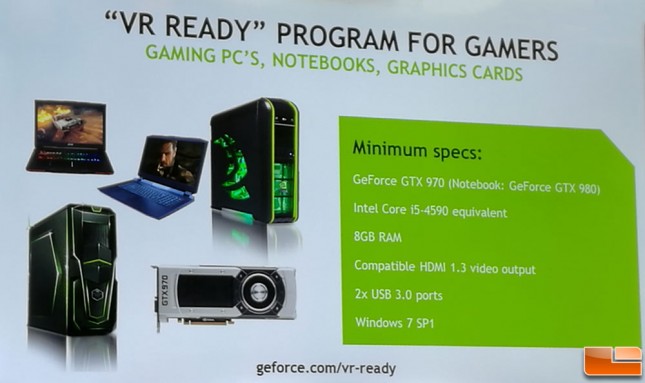
Its only the first month into the year of 2016, and Virtual Reality is already taking the technology sector by storm. Manufacturers from all backgrounds are working on their own versions of a head mounted display with motion tracking capabilities. Sony, Oculus, HTC/Valve, and Samsung are the major players that have been working on the technology behind such devices.
2016 serves as the first year in which each company takes Virtual Reality to new heights. The HTC Vive and Oculus Rift have launch dates for their new devices scheduled for Q2 and Q3 of this year. If you have been following virtual reality tech, you likely already know that these devices require a relatively powerful PC in order to power these advanced displays to their maximum potential. Today we’ll over some of the requirements, why they are important, and ultimately we’ll try to answer the question, Are you ready for VR?
image: http://www.legitreviews.com/wp-conte...dy-645x370.jpg
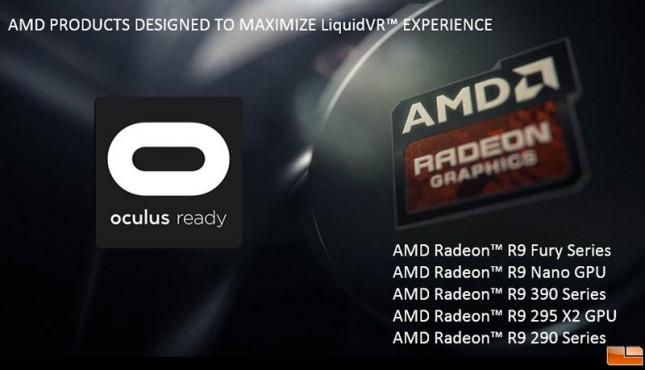
The Hardware
The following is suggestions reported by AMD/NVIDIA/Oculus for recommended hardware requirements. Remember that the Oculus CV1 and other Virtual Reality devices have not been released yet, so these requirements are subject to change once they actually release later this year.
- GPU: NVIDIA GeForce GTX 970 4GB / AMD Radeon R9 290 4GB or greater
- CPU: Intel Core i5- 4590 equivalent or greater
- Memory/RAM: 8GB+ RAM
- Outputs: 2x USB 3.0 ports, HDMI 1.3
- OS: Windows 7 SP1 or newer
These system requirements are quite high considering the average gaming PC is only suited for 1080p (1920×1080) gameplay. According to NVIDIA, there are only be 13 million computers in the world that have fast enough hardware to get the power needed to run virtual reality games.While this may sound like a large number, 13 million accounts for less than 1 percent of the world’s 1.43 billion computers, according to estimates from research firm Gartner. Steam’s monthly Hardware Survey provides confirmation that the majority of the consumer base is under equipped for a proper VR experience. You’ll need a system capable producing high frame rates at even higher resolutions. Video cards like the NVIDIA GeForce GTX 970 4GB video card are said to be the minimum when wanting a discrete graphics solution that is capable of rendering multiple screens at higher than 1080p resolutions, which you’ll need because the Oculus Rift CV1 comes equipped with duel screens with resolutions around 2k. This will limit the user base for VR as you’ll need right around a $1,000 off the shelf PC to use Oculus’s hardware that already runs $599.
1920×1080, 1080p or Full HD resolution at 60Hz is generally seen as the standard target setting for modern gaming. That also happens to be about one-quarter the raw pixel rendering cost of a VR headset display at 90Hz. So, you could think of the raw pixel demands of VR gaming at 90Hz as being approximately 4 times the demand at 1080p/60Hz. Another simple comparison: VR gaming has roughly 90 percent the pixel demand of gaming at 4K resolution (3840×2160) at 60Hz. If you’re familiar with gaming benchmarks, you’ll know that achieving 60 FPS at 4K resolution is no simple feat.
image: http://www.legitreviews.com/wp-conte...on-300x169.jpg
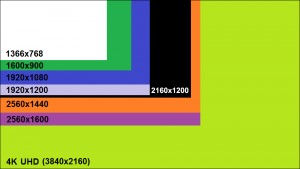
tl;dr – Given the challenges around VR graphics performance, the Rift will have a recommended specification to ensure that developers can optimize for a known hardware configuration, which ensures a better player experience of comfortable sustained presence. The recommended PC specification is an NVIDIA GTX 970 or AMD 290, Intel i5-4590, and 8GB RAM. This configuration will be held for the lifetime of the Rift and should drop in price over time. – OculusIf you are looking for some suggestions on what Graphics Cards would work the best for you, check out some of our reviews in links below:
- NVIDIA GeForce GTX 980 Ti Video Card Roundup – ASUS, MSI and Zotac
- XFX Radeon R9 390 Black Edition OC 8GB Video Card Review
- ASUS Radeon R9 390X STRIX 8GB Video Card Review
The Virtual Reality Head Mounted Displays (HMDs)- The Oculus Rift
image: http://www.legitreviews.com/wp-conte...ft-645x378.jpg
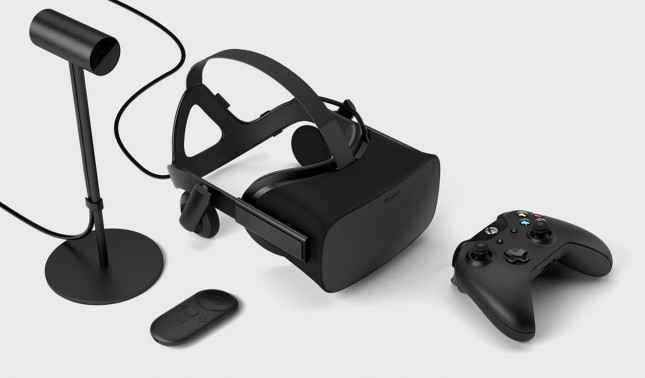
The Rift is a virtual reality head-mounted display developed by Oculus VR (Which was purchased by Facebook). It was initially proposed in a Kickstarter campaign, during which Oculus VR (at the time an independent company) raised US$2.5 million for the development of the product.
The Rift (Also known as CV1 for Consumer Version 1) is scheduled for release on March 28, 2016, making it one of the first consumer-targeted virtual reality headsets. It has integrated headphones which provide a 3D audio effect. The Rift has rotational and positional tracking. The positional tracking is performed by a USB stationary IR sensor, which normally sits on the user’s desk, allowing for using the Rift while sitting, standing, or walking around the same room. The Rift CV1 also is coming packaged with a Xbox One controller, and a small remote for specific function (like the ones found on the side of the Samsung Gear VR) as well as the space shooter Eve: Valkyrie and a new adventure game Lucky’s Tale.
image: http://www.legitreviews.com/wp-conte...ch-645x363.jpg
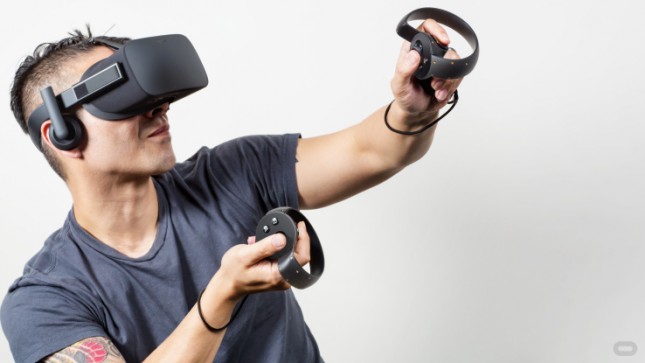
It should be mentioned that Oculus has a set of motion controllers in development as well (aptly named Oculus Touch); however, recently the launch date of the product was delayed months past the release date of the CV1 and as such it will not be packaged together with the VR headset, and will remain a separate product.
The Rift has gone through various prototype versions in the years since the Kickstarter campaign, around 5 of which were demonstrated to the public. Two of these prototypes were made available for purchase as ‘development kits’, DK1 in late 2012 and DK2 in mid 2014, to give developers a chance to develop content in time for the Rift’s release. However, both were also purchased by a large number of enthusiasts who wished to get an early preview of the technology.
Price $599 USD
Preorder is OPEN
- The HTC Vive
image: http://www.legitreviews.com/wp-conte...-1-645x247.jpg
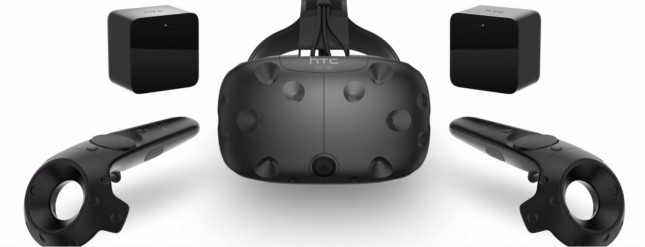
HTC Vive is an upcoming virtual reality head-mounted display being developed in co-production between HTC and Valve Corporation. It is also part of Valve Corporation’s SteamVR project. It is unique in comparison to other HMDs in that it incorporates 2 “Lighthouse” sensors to track a larger area of the user’s movements and combines that with two custom designed handheld motion controllers.
The device uses more than 70 sensors including a MEMS gyroscope, accelerometer and laser position sensors, and is said to operate in a 15 feet by 15 feet (4.5 by 4.5 meters) tracking space if used with the “Lighthouse” base station. Lighthouse system uses simple photosensors on any object that needs to be captured; to avoid occlusion problems this is combined with two lighthouse stations that sweep structured light lasers within a space. The front-facing cameras allow the software to identify any moving or static objects in a room. It’s part of the Chaperone safety system to prevent and warn users of hitting an obstacle (an object, or a wall) in game.
Price is unknown at time of writing
Pre-order Opens February 29th 2016
- Other HMDs
image: http://www.legitreviews.com/wp-conte...y-Morpheus.jpg
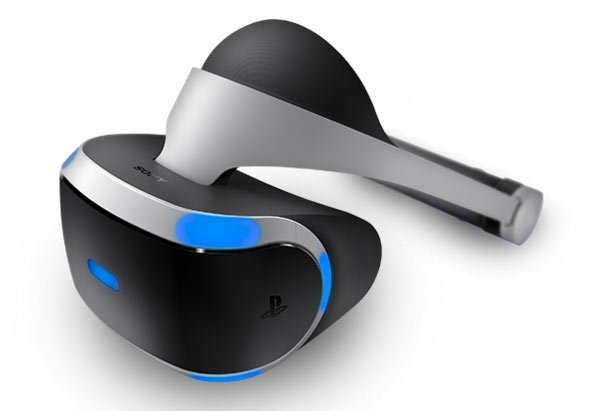
The market for VR, augmented reality, and head mounted displays is still in a obviously very early stage of development. Thankfully there are many developers and manufacturers working on the technology in various areas such as mobile and home gaming consoles.
- Sony Morpheus – This HMD is built from the ground up for a VR experience at the couch in your living room, using only your Playstation 4 console. The design will allow the PS4 to use your TV display at the same time the VR headset is being used to enable multiplayer support among other tasks. Due to the limited scope of applications this device can be used to it will be put in this category, however I believe this product will potentially be able to a much more accessible way to play full gaming experiences using VR over much more pricey aforementioned devices that would require a high-end PC to power them.
- Microsoft Hololens – Microsoft wants to take VR and Augmented reality, put them together and disconnect from the requirement of needing a PC to power it, thus taking VR into a whole new niche of communications, education, and training possibilities that wouldn’t be possible with other HMDs.
- Razer’s OSVR – The OSVR isn’t a rival to the likes of Oculus Rift, PlayStation VR and Samsung Gear VR. It’s intended to make life easier for developers to make applications VR hardware – without technical (software and hardware) limitations getting in their way. The development of the OSVR is open source, breaking down limitations that hinder development even on Oculus Rift.
The Games
When we talk about Virtual Reality, it can be hard to describe the experience without explaining the application or game used. If you have used the DK1, DK2, or Samsung Gear VR before, you’ve likely already dived into some very memorable experiences. Developers from all walks of life are working on creating either new VR experiences or revamping old experiences for virtual reality. Some older games like Valve’s Half-Life 2 has been updated to natively support VR. Others like Rockstar’s Grand Theft Auto 5 have been retrofitted with VR capability using third-party mods.
Generally speaking, since the environment for Virtual Reality is ever changing, you’re likely to see your favorite game see some type of support for VR, either from the software developers themselves, or from the modding community. Try performing a Google search for the game you want play, and if it supports VR. The steps for setting up VR in the first place for your games can usually be found either on VR specific community forums, or game specific communities.
image: http://www.legitreviews.com/wp-conte...rd-300x169.jpg
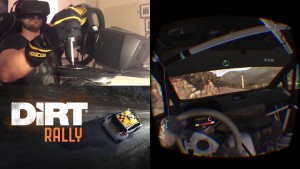
Some games will convert much more easily to virtual reality than others. For instance, driving simulators typically already have a First Person Camera mode while driving. Converting this camera mode to work with VR requires much less work than than many other types of games. Games like Project Cars and Euro Truck Simulator 2 already have support for VR headsets. The development team behind Asseto Corsa (Another excellent driving simulator found on Steam) stated they will work on VR capabilities once the final product of the Oculus releases.
We have a review of the GTX 970 vs. the Radeon R9 390 while playing Codemaster’s Dirt Rally (An excellent game BTW)
Of course there is a whole host of games that are either built from the ground up for virtual reality or have been modified by the developers to support VR. Steam has these games categorized by “VR Ready” here.
Resources
Here is some good links to reference to for more information about VR devices and more:
- Oculus: Powering the Rift
- Oculus Blog
- Oculus Rift Compatibility Application [Download Link]
- Nividia Virtual Reality
- SteamVR
- AMD LiquidVR
Are you Ready for VR?
The bar is being raised pretty high with the first generation of VR. And that could very well be a good thing considering, we’ll need VR to work the best that it can if it is to succeed. Things like display resolution, high refresh rates, device weight, and build quality are major factors that could make or break the VR experience. The main draw for VR is the immersion factor (Feeling like “being in” the game). Cutting costs that would affect these items would ultimately look bad not only for the developer/manufacturer but for the industry and the VR movement itself. So expect to pay decent sum of money for these devices and the PC hardware required to run them. The industry will undoubtedly improve on manufacturing and prices will drop across the board over time, which should lower the barrier of entry over the next few years.
Assuming money isn’t a barrier to you, then congratulations, you’re ready to experience the beginnings of this amazing new technology. Us first adopters will help pave the way for advancements in hardware as well as software technology. The larger the market is for VR users, then more developers will take the tech more seriously, meaning even more choice and applications of use for VR.
Don’t forget to make sure you have room to experience all that…VR. The Oculus Rift does have a IR sensor that needs a clear vision of the HMD, meaning that your messy desk may need some improvements before these devices launch. Oculus also recommends using a swivel style chair, as it will make movements in VR much easier. I can tell you from first-hand experience that many games and experiences in VR have you looking behind you, which having a swivel chair will assist in. Don’t forget that you’ll need a clear path between you and you PC for the cables and wires to run that come off of the HMD.
With the HTC Vive, you’ll need a decently large space if you plan to utilize that standing full body VR experience, and why wouldn’t you? The base stations can cover a play area of about 15 feet x 15 feet, and need to be positioned above head height. If you have some bookshelves in your living room, those will probably be perfect mount points. Otherwise, you might be looking at wall-mounting. Obviously, you’ll need to clear your intended VR space of furniture, rugs, and any other tripping hazards. Keep in mind that your planned playspace doesn’t have to be as large as Lighthouse supports. Also remember that you’ll be dealing with the cables for HTC’s HMD as well. In demo’s of the product (like at CES) a second person held the cables for the user and made sure they didn’t trip over them, however in your own home this might not work. For now HTC, advises that you just clip the cables onto your belt to keep them away from your legs while walking…hopefully.
I’ll plan to talk more about VR as time progresses and receive my own Oculus Rift preorder in March. If you think I left anything out, or have any questions we didn’t answer here, please leave them in the comments section below.
http://www.legitreviews.com/are-you-...dmLgpa0Ssej.99
-
27-01-16, 20:21 #45Tech Ubër-Dominus


- Registo
- Nov 2013
- Local
- City 17
- Posts
- 30,121
- Likes (Dados)
- 0
- Likes (Recebidos)
- 2
- Avaliação
- 1 (100%)
- Mentioned
- 0 Post(s)
- Tagged
- 0 Thread(s)
Apple's Tim Cook: 'VR is really cool, has interesting applications'
Noticia:With all the major players like Google, Samsung, HTC and Facebook entering the VR arena, everyone has been wondering when Apple will jump in to make their mark as well. Apple's CEO Tim Cook recently said a few words that could indicate that the Cupertino is indeed experimenting with VR, and recognizes the worth of the new platform.
In a quarterly earnings call, CEO Tim Cook was asked by analyst Gene Munster if Apple will tackle virtual reality. "In terms of VR, I don't think it's a niche. It's really cool and has some interesting applications," Cook said. Sure that's not a confirmation, but we should all note that Cook definitely understands the merits of VR, and how it'll fit into the future of tech.
While the tech titan hasn't revealed any concrete VR plans thus far, evidence says otherwise. Apple has recently hired Virginia Tech professor Doug Bowman, an expert in the field of virtual and augmented reality tech. Bowman has created some impressive 3D user interfaces for VR and AR tech, and will be a huge asset for Cupertino's secret projects.
We've also uncovered Apple's patents for a VR iPhone display similar to Samsung's Gear VR. Apple traditionally aims to make its innovative mark on any technology field it enters, so it'll be interesting to see how it will shake up the realm of VR and AR.
Remember that Apple just reported a massive $18.4 billion in profits for Q4 2015, it's biggest earnings quarter in history. With that kind of money coming in, Apple is likely investing heavily in future-proofing its hardware, and there's no way that VR isn't going to be a part of that.
In other news, it looks like Google is going to enter the VR arena in earnest, with the possibility of a consumer-grade headset like the Oculus Rift. The competitors are all revving up for virtual reality, and we bet that Apple is doing the same.

http://www.tweaktown.com/news/49978/...ons/index.html
Dos poucos gigantes que ainda não apresentou nada em concreto, será que vem alguma coisa da Apple?
Informação da Thread
Users Browsing this Thread
Estão neste momento 1 users a ver esta thread. (0 membros e 1 visitantes)






 Responder com Citação
Responder com Citação









Bookmarks